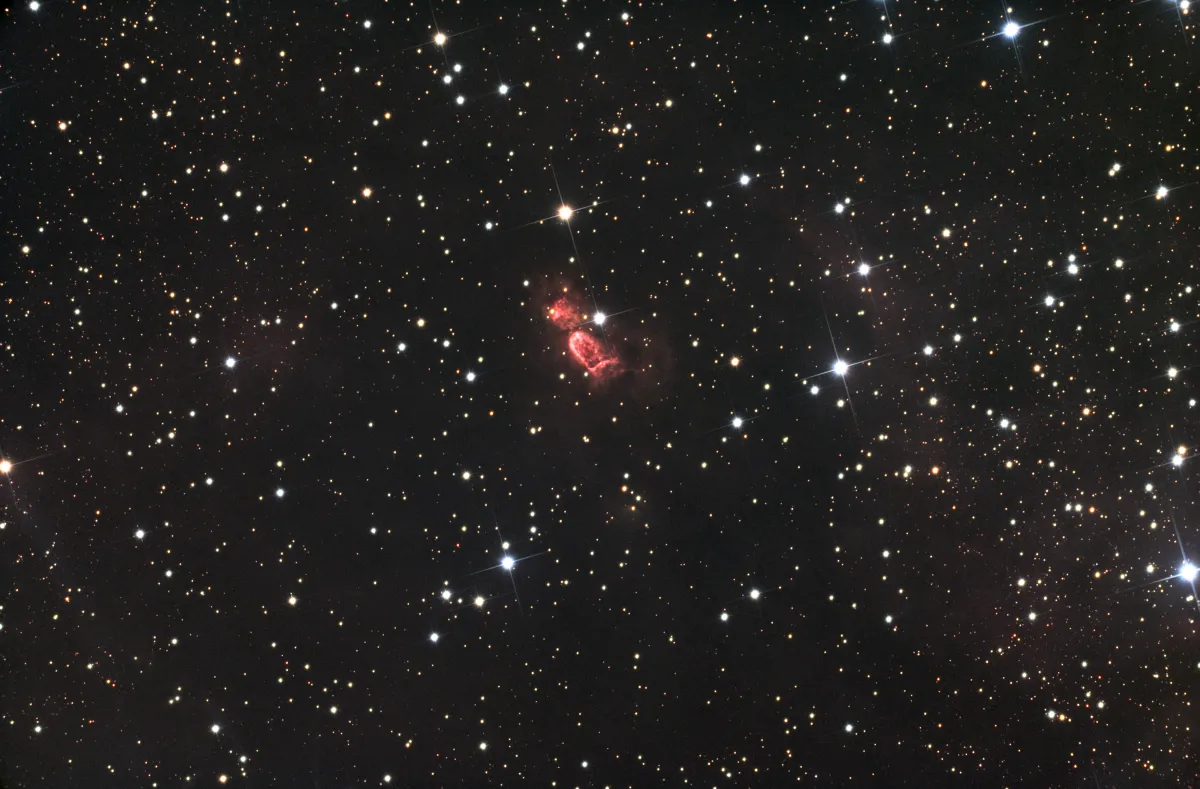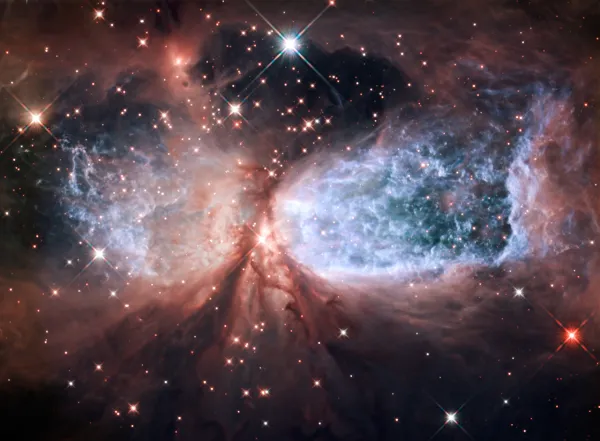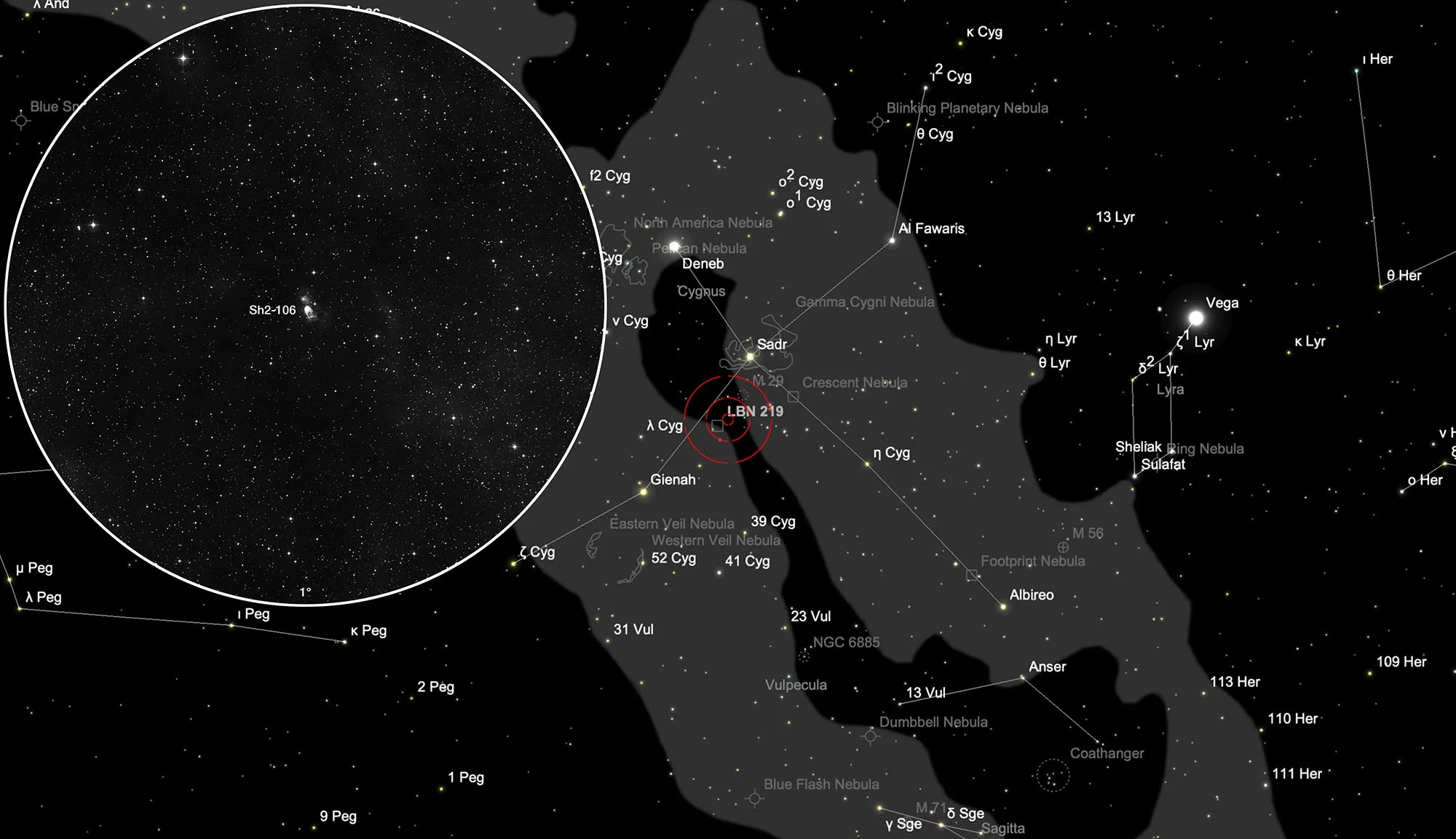Galactic Nebula Sharpless 2-106

History
This emission nebula was discovered in 1946 by the German astronomer Rudolph Minkowski at Mount Wilson Observatory and cataloged as M 1-99. [454] The American astronomer Stewart Sharpless cataloged it as Sh2-106 (S106) in the 1950s and published it in his second edition of the Sharpless catalog in 1959. [310]
Physical Properties
The nebula looks similar to a planetary nebula at first glance thanks to its bipolar appearance, but it is actually a galactic nebula consisting of glowing, ionized hydrogen gas (H-II region) and dust clouds that either absorb or reflect light.

Inside the nebula is a massive young star designated S106 IRS4 (Infrared Source 4). At its poles, it pushes super-hot gas into the cooler, interstellar medium at high speed. The surrounding gas is heated to around 10'000 Kelvin, ionized and thereby made to glow. A ring of cooler dust and gas orbiting the central star obscures the central star forming a belt, forming a structure reminiscent of an hourglass. The central star has about 15 solar masses and is in the final stage of its formation. It will soon settle down and enter the main sequence, the mature stage of stellar life.
Detailed studies of the nebula in infrared light revealed about 600 brown dwarfs. These substellar objects have less than a tenth the mass of the sun and are therefore too small to ignite nuclear fusion in their interior. They form a small cluster of stars called the Sh2-106 IR Cluster around the nebula. The distance from us is about 2000 light years. [145, 308, 563]
Finder Chart
The nebula is in the eastern wing of the Cygnus, about one degree northwest of vdB 133 around the star 44 Cygni. On 28 July it is in opposition to the Sun and culminates at local midnight. In the months of March to December this constellation is favourable for observation.
